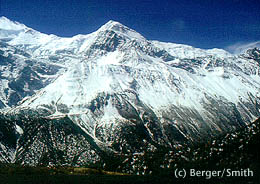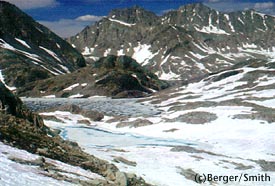We all know the benefits of the buddy system; they’ve been drilled into our heads since childhood. Virtually every instruction guide you’ll read on almost every activity — hiking, diving, swimming, caving, mountaineering — urges outdoorspeople to stay with at least one partner, and sometimes more.
But what happens when partners aren’t available? On a long-distance hike, it’s not always possible to find a compatible partner who has the same several-month time-frame off. A hiker may start with a partner, but become separated by injury or incompatibility. And some people simply prefer to experience the solitude and personal growth of a solo long-distance hike, and the independence of not having to negotiate every decision of daily mileage, how long to stop for lunch, or where to camp.
Solitude on a Long-Distance Trail
Even hikers who choose to hike alone sometimes get lonely. But being independent on a trail doesn’t mean being alone all the time.
One possibility is to choose a trail where there’s a social scene. Trails with a hut, shelter, or lodging system are found throughout Europe, New Zealand, Nepal, and (less commonly) in North America. Trails with permit systems that require hikers to stay in designated camping areas are also good places to meet others — or at least, to have the security of camping with other people around. On the popular Appalachian Trail, for example, sociable hikers can find companionship almost whenever they want. Solitary types can hike alone and camp alone, but they can also drop into trail towns, hostels, or trail shelters if the silence becomes too deafening.
Another advantage of the Appalachian Trail (and increasingly, this is happening on the Pacific Crest Trail, as well) is that it is relatively easy to find a partner en route. Hikers who start solo might join up with informal groups of others for a while, or may form partnerships that last for the duration of your hike. On less traveled trails, there are fewer opportunities to form such partnerships.
Hikers who remain solo might experience occasional bouts of loneliness. Some simple strategies can help.
- Bring a book. A long trail is a great time to read one of those heavy-weight classics that real life so seldom makes time for.
- Bring music. Not everyone likes listening to music in the woods, but for hikers who do, an Ipod provides entertainment.
- Write in a journal. Some hikers get even more creative, by composing haiku poems, drawing what they see, or writing songs.
- Bring a project. Some hikers use the time on a long-distance hike to reevaluate their lives. A project book (an example would be Julia Cameron’s The Artist’s Way, which includes many pages of creative exercises) may be a great way to use some of the time in camp in a productive and creative way.
Safety Strategies for Solo Hikers
- Choose a trail with a fair amount of traffic.
- Sign in at permit stations at the entrance to wildernesses. Permits tell rangers where and when hikers arrived, and can help them search for a lost hiker.
- Sign trail registers. These are informal notebooks left on some trails in shelters, at trailheads, and even in hiker-friendly businesses and hostels. They are another way to know when a hiker was last seen.
- Don’t take unnecessary risks. This means avoiding the temptation to tale shortcuts, waiting out extremely bad weather, and being vigilant about environmental ailments such as altitude sickness, hypothermia, and dehydration.
- Make sure someone at home knows the itinerary.
- Bring a cell phone or a satellite phone. International travelers should make sure they have international cell service on their phones, or a dedicated international moblie phone.
- Know standard ways of signaling, such as using a mirror, lighting a fire, using the color orange, and sending out signals in bursts of threes.
- Solo women travelers should be especially vigilant about who they tell their plans to.
- Carry an emergency kit with the “10 essentials” in it.
Solo hiking isn’t for everyone. But with some experience, the right gear for the conditions, and the common sense to stay safe, it can be an intense and rewarding experience.




